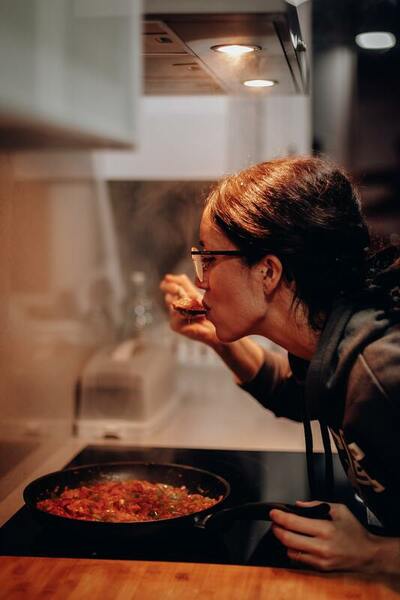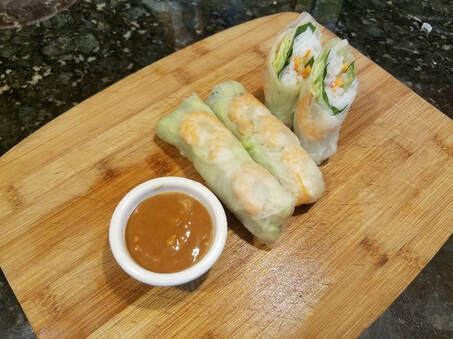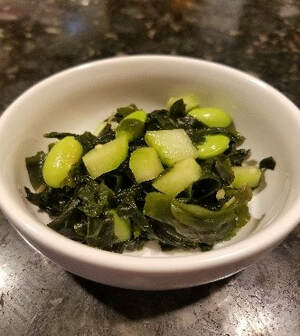 Umami is the 5th taste. Unlike the other four tastes, it has a certain je ne sais quoi. The taste of umami is hard to describe, but some might call it “savory”. The term “umami” was coined by the Japanese Scientist, Kikunae Ikeda, in 1908. He examined the same seaweed broth his wife made for him in his lab and isolated the chemical compounds that made the broth taste so good. That chemical compound was monosodium glutamate, also known as MSG. MSG is the purest form of umami, just like how sugar is the purest form of sweet. MSG is also a flavor enhancer like salt and sugar. It can make bland foods outrageously flavorful. In fact, there are specific taste receptors on the tongue specifically for glutamate, whether it be naturally occuring in food or isolated like in MSG. Humans are biologically geared to like the taste of glutamate because it means that there is edible protein in the food we are eating. Aside from seaweed, MSG or umami is found naturally occurring in a wide variety of other foods. Here are some, just to name a few: Cheese, aged ham, ripe tomatoes, anchovies, garlic, onions, soy sauce, fermented foods, shellfish, meat, egg yolks, cabbage, carrots, and potatoes. It is a common and untrue myth that MSG is unsafe due to claims of it causing headaches and tingling. It is actually one of the most studied food additives due to the controversy that surrounds it. Research has found that it is safe for all lifecycle stages and has been approved by the FDA as a safe food additive. In fact, Americans and Europeans consume about 0.3-1.0g of MSG per day. MSG can be part of a heart healthy diet since it contains about ⅔ less sodium than table salt. MSG should not replace salt entirely, but rather, be used as a partial-replacement to maximize flavor and reduce overall sodium. Too much MSG may actually overstimulate the taste buds, just like how adding too much salt in a recipe is unpalatable. It is recommended to use a 1:2 ratio of MSG to salt. That might look like ¼ tsp MSG plus ½ tsp salt to flavor a small pot of soup that called for 3/4-1 tsp salt. Asian cuisines are famous for their use of MSG/umami and MSG-containing condiments. Soy sauce, fish sauce, hoisin sauce, mirin, rice vinegar, and sesame oil are only a few of the many examples available on the market today. Below are some recipes that make use of MSG or MSG-containing condiments to bring out the vivid flavors of fresh ingredients. Enjoy! ~Genesis, MS Nutrition, Dietetic Intern Resources:
Tinola (Filipino Ginger Chicken Soup with Green Papaya  Ingredients:
Instructions
Serves 8 Serving size: 10 oz (about 1 ½ cups) Nutrition Facts per Serving: 167 calories, 7g carbs, 1g fiber, 3g fat, 27g protein, 295 mg sodium, 477 mg potassium Recipe adapted from the website “KawalingPinoy”. 3/21/2013. https://www.kawalingpinoy.com/tinolang-manok-chicken-tinola/. 3/1/2019. Fresh Spring Rolls Ingredients for the Spring Rolls: 2 ounces rice vermicelli
Ingredients for the Sauce:
Instructions:
Serves 10 Servings size: 1 spring roll and ~1.5 Tbsp of sauce Nutrition Facts per Serving: 155 calories, 21 carbs, 1.7g fiber, 6g fat, 4.5g protein, 130 mg sodium, 493 mg potassium Recipe adapted from the website “Not Enough Cinnamon”. 3/17/2013. https://www.notenoughcinnamon.com/how-to-make-vietnamese-fresh-spring-rolls-step-by-step-recipe/. 3/1/2019 Cucumber and Seaweed SaladInstructions:
Serves 4 Servings size: ~2oz (¼ cup)
Nutrition Facts per Serving: 28 calories, 3g carbs, 0.75g fiber, 1g fat, 1.5g protein, 110 mg sodium, 104 mg potassium
0 Comments
Leave a Reply. |
SD BlogA place for our consultant Registered Dietitian Nutritionists (RDNs) to share nutrition science, yummy and healthy recipes, tips on seasonal ingredients, and other nutritional musings. Enjoy! Categories
All
Archives
May 2024
|



 RSS Feed
RSS Feed